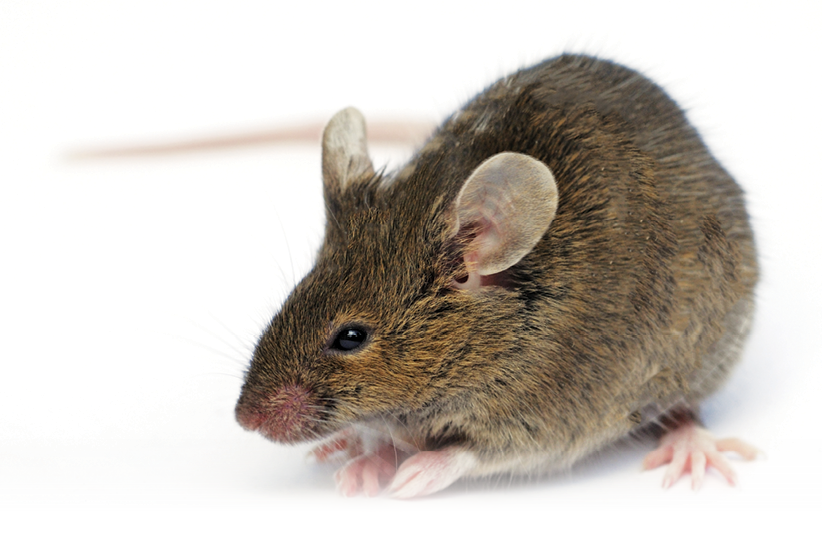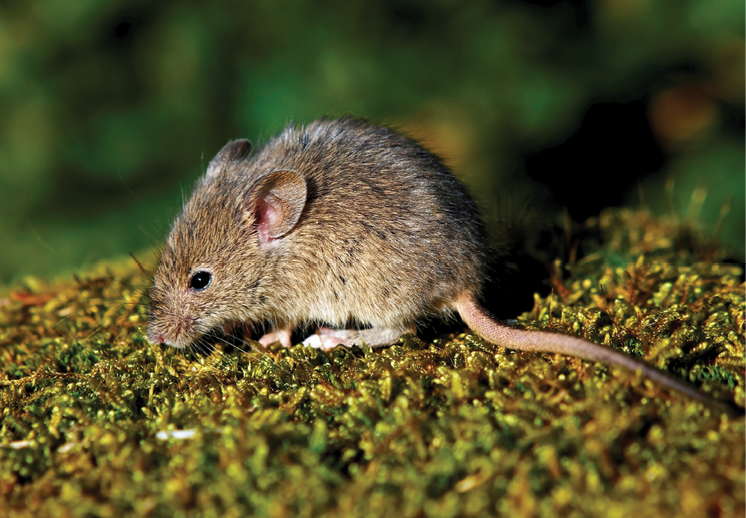
The house mouse has been dubbed by some scientists as the “second most successful mammal on earth.” It also represents the most important rodent pest in the United States. Various industry surveys have estimated that house mouse control accounts for 68 percent of all rodent work performed. But despite all the money, effort and expertise directed toward controlling the house mouse, it survives. And it thrives, in part, for the following 10 reasons.
1. Ability to survive in a wide range of habitats: The house mouse has been described as a “mammalian weed” because it is so adaptable to many different conditions and is capable of inhabiting many different areas. It has the widest distribution on the planet of any mammal second only to humans. The house mouse occupies all of the major land masses on earth and most of the minor ones. It inhabits cold islands near Antarctica, tropical isles in the Caribbean, open cold tundras, dry hot deserts and salt marshes. It exists in coal mines 1,800 feet below the surface, as well as 15,000 feet above sea level, high up in the Andes Mountains. Inside urban structures, infestations have developed in heating ducts in the upper stories of tall skyscrapers, as well as within frozen meat lockers at temperatures of -10 degrees Centigrade.
2. Small body size: The mouse is able to enter buildings and rooms through small openings which larger rodents cannot fit. Once inside, it requires very little space and can occupy literally hundreds of structural locations, equipment voids and appliances. Its small size also enables it to be overlooked and transported inside delivery boxes and other items.
3. Specialist in secretive behavior: Most mice living in buildings are active when people are inactive — during the night or at other times when human activity is minimal. Moreover, when the mouse is active, it moves quickly and quietly. This “cryptobiotic” behavior combined with its small size helps explain why new infestations often go undetected until there are numerous mice present.
4. High reproductive potential: Inside most occupied buildings, where foods may be accessible, the mouse has an impressive potential for producing a high number of offspring in a relatively short period of time. And as long as materials are available for constructing nests, mice can reproduce under seemingly impossible conditions such as within frozen meat lockers. The average litter contains five to seven young, but can range from two to 13 mice.
5. Opportunistic feeder: The house mouse is an opportunist and will feed on a wide variety of foods found inside human dwellings. Should one food disappear, the mouse will readily switch to whatever is available.
6. Require little or no water: Unlike commensal rats and most other mammals, the house mouse has a kidney system similar to that of the desert rat. Thus, the mouse is able to conserve and/or produce its own water when free water is scarce or unavailable, contributing to its ability to survive.

7. Small territories: The average home range of house mice comprises a 10- to 30-foot radius around their nest. But when good harborage and abundant food resources exist, the home ranges become even shorter — in some cases only a couple of feet in any direction. For example, in food warehouses and supermarkets mice may not even leave the pallet of food they are nesting in at these accounts.
8. A compulsive explorer: The house mouse constantly explores its environment, gathering valuable information about the location of other mice, food, water, nesting sites and places to hide from predators. In this way, the mouse eventually can locate the best available habitat, enhancing their chances of survival. Peak activity periods occur shortly after dusk and again prior to dawn.
9. Variable behavior: The behavior patterns of the house mouse have been referred to as “unpredictable.” Variations exist in mouse behavior according to different mouse populations and their specific environments. For example, mice in certain commercial accounts may not enter multiple-catch traps or avoid dangerous surfaces such as glue traps.
10. Human tolerance: Finally, people’s attitudes toward the house mouse contribute to its successful co-existence with humans. Walt Disney created the lovable Mickey Mouse, which is still one of the most popular children’s characters the world over. A long list of other mouse stories, children’s books and television “toons” portray mice as cute and lovable animals or heroes. Consequently, a positive — or at least tolerant — attitude toward mice is developed by many people early in life. This attitude, in addition to the mouse’s small size, results in people not prioritizing mouse eradication in urban environments. The few surviving mice of extermination programs constantly replace killed mice, resulting in years of chronic mouse populations co-existing with humans in cities, towns and farms. As a result, mice continue to thrive throughout the United States.
The author, a graduate of Purdue University, is one of the leading rodent control experts in North America. He is the author of “Rodent Control: A Practical Guide for Pest Management Professionals.”

Explore the August 2017 Issue
Check out more from this issue and find your next story to read.
Latest from Pest Control Technology
- SiteOne Hosts 2024 Women in Green Industry Conference
- Veseris Celebrates Grand Reopening of the Miami ProCenter
- Rollins' 2024 Second Quarters Revenues up 8.7 Percent YOY
- Fleetio Go Fleet Maintenance App Now Available in Spanish
- German Cockroach Control Mythbusting
- Total Pest Control Acquires Target Pest Control
- NPMA Workforce Development Shares Hiring Updates
- Certus Acquires Jarrod's Pest Control





